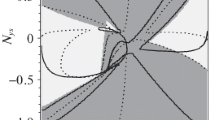The first proposition of the Principia records two fundamental properties of an orbital motion: the Fixed Plane Property (that the orbit lies in a fixed plane) and the Area Property (that the radius sweeps out equal areas in equal times). Taking at the start the traditional view, that by an orbital motion Newton means a centripetal motion – this is a motion ``continually deflected from the tangent toward a fixed center'' – we describe two serious flaws in the Principia's argument for Proposition 1, an argument based on a polygonal impulse approximation. First, the persuasiveness of the argument depends crucially on the validity of the Impulse Assumption: that every centripetal motion can be represented as a limit of polygonal impulse motions. Yet Newton tacitly takes the Impulse Assumption for granted. The resulting gap in the argument for Proposition 1 is serious, for only a nontrivial analysis, involving the careful estimation of accumulating local errors, verifies the Impulse Assumption. Second, Newton's polygonal approximation scheme has an inherent and ultimately fatal disability: it does not establish nor can it be adapted to establish the Fixed Plane Property. Taking then a different view of what Newton means by an orbital motion – namely that an orbital motion is by definition a limit of polygonal impulse motions – we show in this case that polygonal approximation can be used to establish both the fixed plane and area properties without too much trouble, but that Newton's own argument still has flaws. Moreover, a crucial question, haunted by error accumulation and planarity problems, now arises: How plentiful are these differently defined orbital motions? Returning to the traditional view, that Newton's orbital motions are by definition centripetal motions, we go on to give three proofs of the Area Property which Newton ``could have given'' – two using polygonal approximation and a third using curvature – as well as a proof of the Fixed Plane Property which he ``almost could have given.''
Similar content being viewed by others
Author information
Authors and Affiliations
Additional information
(Received August 14, 2002) Published online March 26, 2003
Communicated by G. Smith
Rights and permissions
About this article
Cite this article
Pourciau, B. Newton's Argument for Proposition 1 of the Principia. Arch. Hist. Exact Sci. 57, 267–311 (2003). https://doi.org/10.1007/s00407-002-0062-x
Issue Date:
DOI: https://doi.org/10.1007/s00407-002-0062-x




